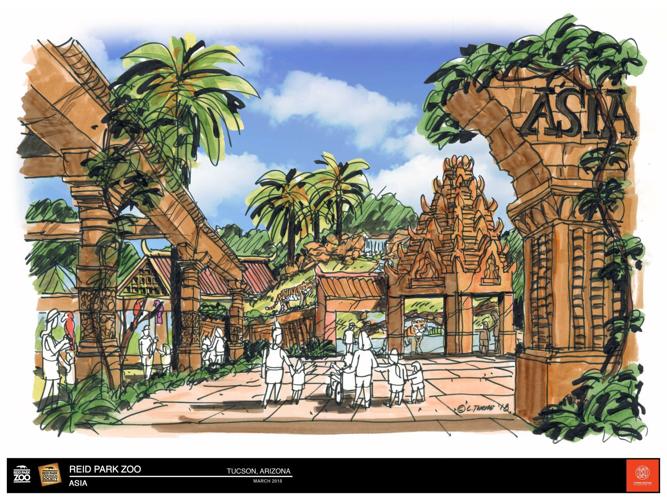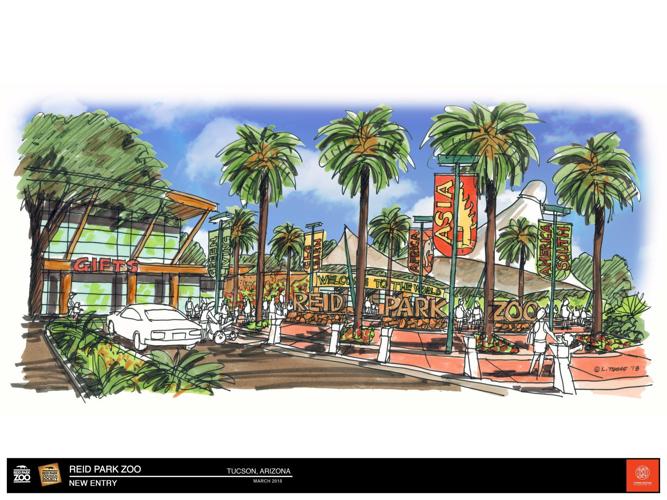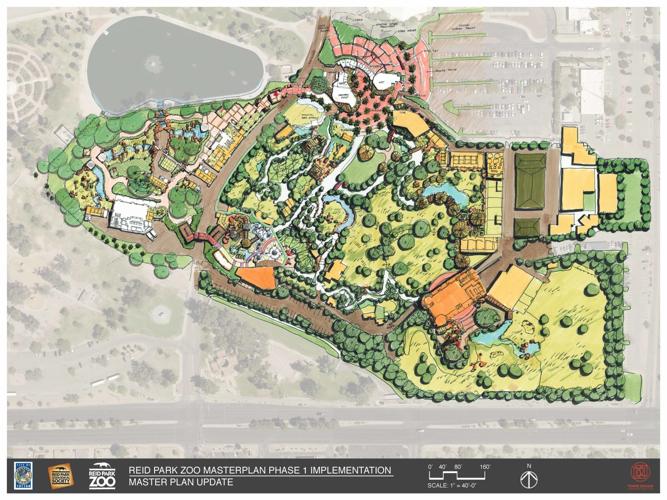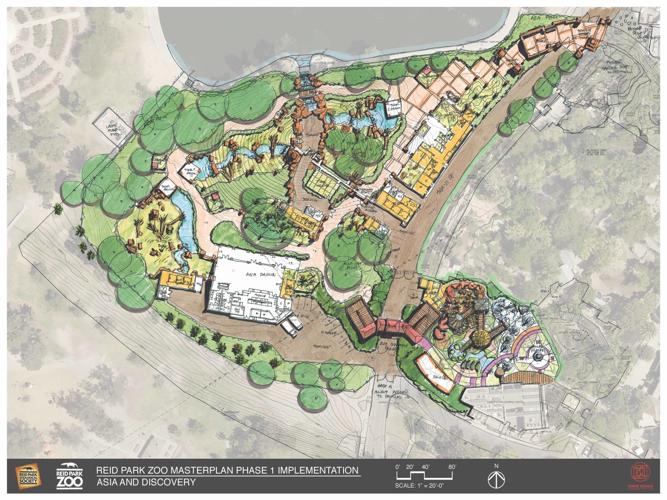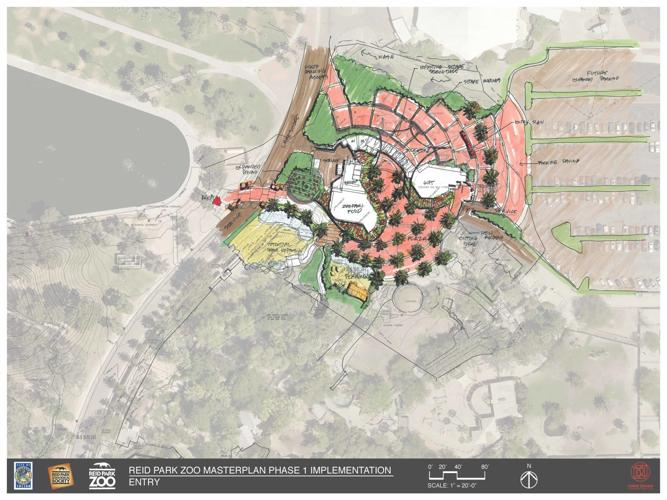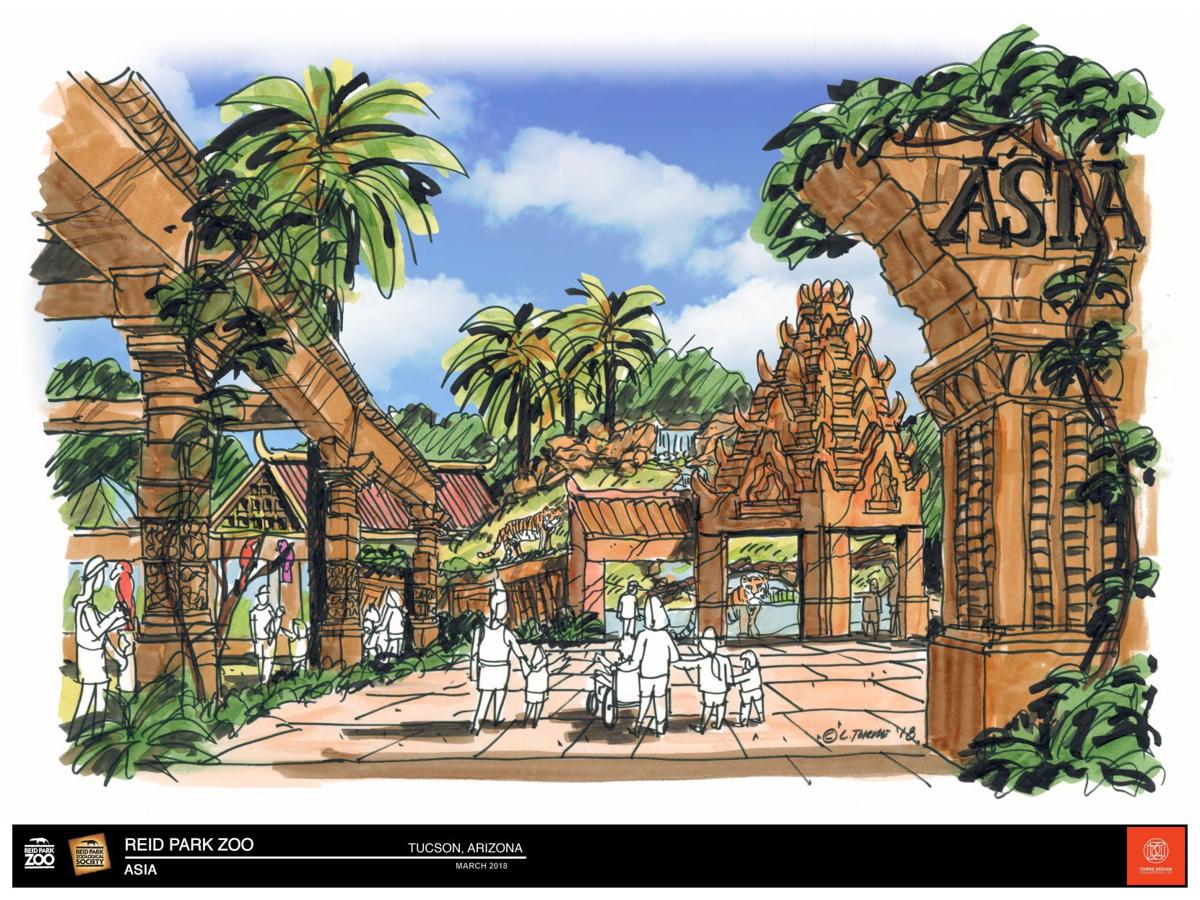A little more than a year after voters signed off on pumping funds into Tucson’s Reid Park Zoo, more than $12 million raised via sales taxes is being put to work.
In November 2017, Tucson voters approved raising the city’s sales tax by one-tenth of 1% for the next 10 years, with the money earmarked for improvements to the zoo’s aging infrastructure and the building of new, interactive exhibits.
During the 2017-18 fiscal year, the sales tax generated more than $3.6 million in funding for the zoo. As of May 3, zoo tax revenues were more than $8.4 million for the 2018-19 fiscal year.
The money became available in July, with zoo staff quickly beginning work to repair guardrails and replace sidewalks throughout the facility. Staff has also replaced the glass and mesh on exhibits for the zoo’s lion, tiger and Andean bears, said President and CEO Nancy Kluge.
The Temple of Tiny Monkeys, a new habitat for four squirrel monkeys, opened in mid-April along the zoo’s South American Loop and is the first of the planned new exhibits to be completed using sales-tax funds, Kluge said.
The use of sales-tax funds were prioritized to focus on improving the animals’ quality of life, repairing the infrastructure and continuing to educate children in the community. To date, more than 28,000 children have had free field trips to the zoo, which has also offered discounts to local nonprofits and expanded its partnership with the Zoological Society.

A rendering of the Phase 1 expansion, which will focus on animals from Asia. Two more phases are also planned.
The Zoo’s 10-year master plan, called “Bigger Spaces, Smiling Faces,” is a three-phase expansion, split by geographical regions.
Zoo officials are in the middle of planning for the first phase, which includes a 3.5 acre addition focusing on Asia. The expansion will include a new flamingo lagoon, a redesigned welcome plaza, a treetop playhouse, a lorikeet feeding area, a hillside tiger habitat, a reptile house, a primate island and an Asian pavilion.
The first of the projects, the flamingo lagoon, is expected to be completed by late next spring, Kluge said. The current lagoon has filtration issues, leaks frequently and has been known to emanate an unpleasant odor due to plumbing issues.
“Animal care is first and forefront,” Kluge said, adding that the back-of-the-house features for animal habitats, seldom seen by guests, are just as important as the front-of-the-house areas that are on display for visitors.
A treetop playhouse and new welcome plaza are slated for anticipated completion in 2021, with the entire Asian expansion expected to be wrapped up by 2022.
The treetop plaza will be built where the flamingo lagoon currently sits and will offer shade while focusing on water conservation. The playhouse will also be interactive and teach visitors about the various animals’ habitats.
The idea is that the expansion will take visitors around the various continents, including Asia, Africa and South America, while also providing a learning experience.
The retention ponds to the west of the existing zoo will be part of the 3.5 acre expansion and a large amount of the space will be dedicated to the zoo’s tiger habitat, which will increase in size from 3,000 square feet to 14,000 square feet.
Tiger breeding is most effective when they don’t see each other throughout the year, Kluge said, adding that the cats will be kept in separate habitats until breeding season, when they’ll be housed together.
The tiger habitat will also feature an underwater viewing area, since tigers love to spend time in water. All of the new habitats will include information about protecting the environment, since the zoo has learned that giving conservation messages to guests when they’re interacting with animals helps those messages to stick, Kluge said.

A rendering of the Reid Park Zoo’s new welcome plaza, which is expected to be completed in 2021.
The Asia expansion will also include an area for various types of large, plumed birds, also called pheasants; siamang, a type of gibbon monkey; small dear called muntjacs; a sloth bear; and sand cats. Sand cats, which hail from Central Asia and the Sahara Desert, weigh between 4 and 8 pounds and have fur on the bottom of their paws to help them run on hot and shifting sand.
Red Pandas will also be part of the Asia expansion, after the Reid Park Zoo hosted a pair for a few months in late 2017.
Zoo staff members are narrowing down specific species for the reptile house, but visitors can expect to see snakes, lizards, insects and a Komodo dragon. Fruit bats will have a habitat outside of the reptile house and the zoo is also planning to house cranes in a rice paddy exhibit.
AFRICA EXPANSION
Design and planning for Phase 2, the Africa expansion, is a few years off, Kluge said, but the zoo is planning to construct an African safari lodge, an underwater hippo habitat and a rhino feeding area. The lodge will offer giraffe feeding from the second floor and hidden barriers between the different habitats will create the impression that guests are looking out at a real African savanna.
Elephants are a hallmark of the zoo, Kluge said, their habitat taking up a quarter of the zoo’s acreage and a quarter of its animal care staff. The seven-acre exhibit opened in 2012 and is getting ready to welcome another baby elephant next spring, the second born at Reid Park Zoo and in the state since Nandi’s birth in August 2014.
The planned African expansion will build upon the elephant’s current habitat and occupy the central part of the zoo. The expansion will also include another play area for kids, with tunnels and pop-up viewing spots to get up close with meerkats. A village of round African homes welcoming visitors to the lodge will be able to seat 400 people and blend into the landscape of the new habitat.
CONNECTING PEOPLE, ANIMALS
Phase 3 will focus on the zoo’s South American Loop, where the Temple of Tiny Monkeys resides. Improvements will include a Mayan Temple-themed play area, additional windows and closer pathways to an expanded Andean bear habitat, and an expansion to the zoo’s gift shop.
“Our mission is to create memories and connect people to animals,” Kluge said.
The zoo is also expanding after-hour events, with Summer Safari Nights beginning May 25 and running through August 17. Every Saturday, the zoo will be open from 6 to 8 p.m. and feature live music, animal encounters, keeper chats, activities and food and drink specials.
In addition to the baby elephant arriving next spring, zoo staff have received breeding recommendations for the new squirrel monkeys, of which the zoo has three females and a male. Breeding programs are also in the works for the giraffes — although Kluge said they’ve been “trying for some time” — and Andean bears.
“Few other zoos match what we have here,” said George Ball, Board Chairman of the Reid Park Zoological Foundation. “It’s small, but one of the best in the country when it comes to conservation efforts. This is a zoo that everyone can be proud of.”

An updated rendering of the Reid Park Zoo’s 10-year Master Plan.

An updated rendering of the upcoming Asian expansion at the Reid Park Zoo, which is expected to be completed by 2022.

An updated rendering of the overhead view of Reid Park Zoo’s new welcome plaza, which is expected to be completed in 2021.


